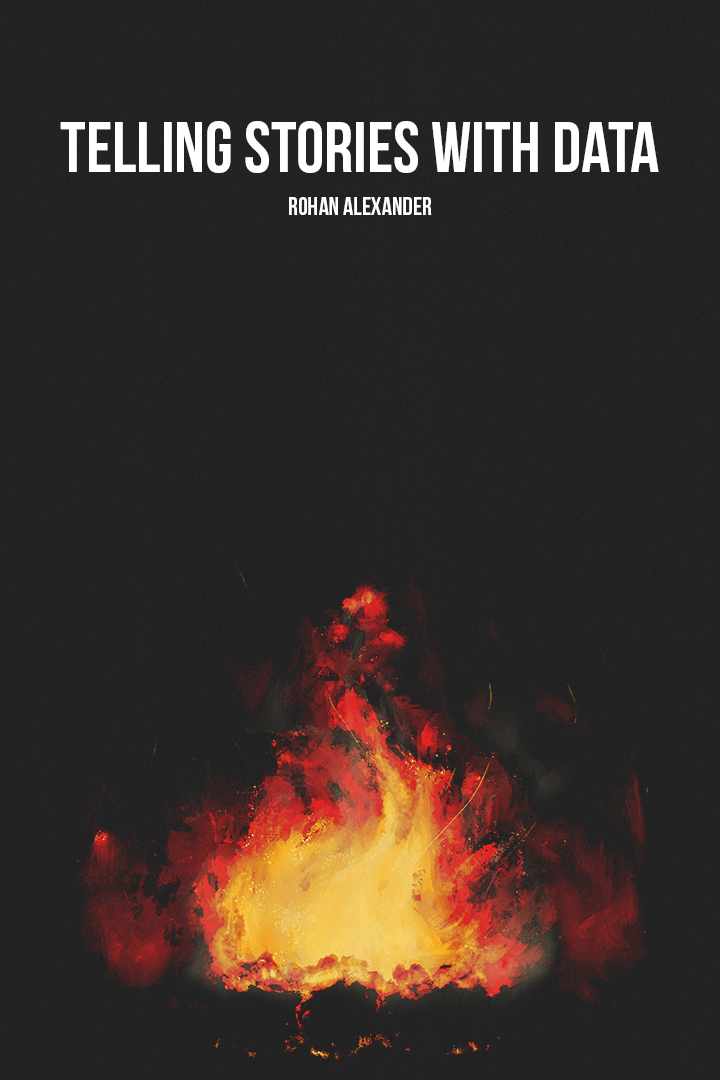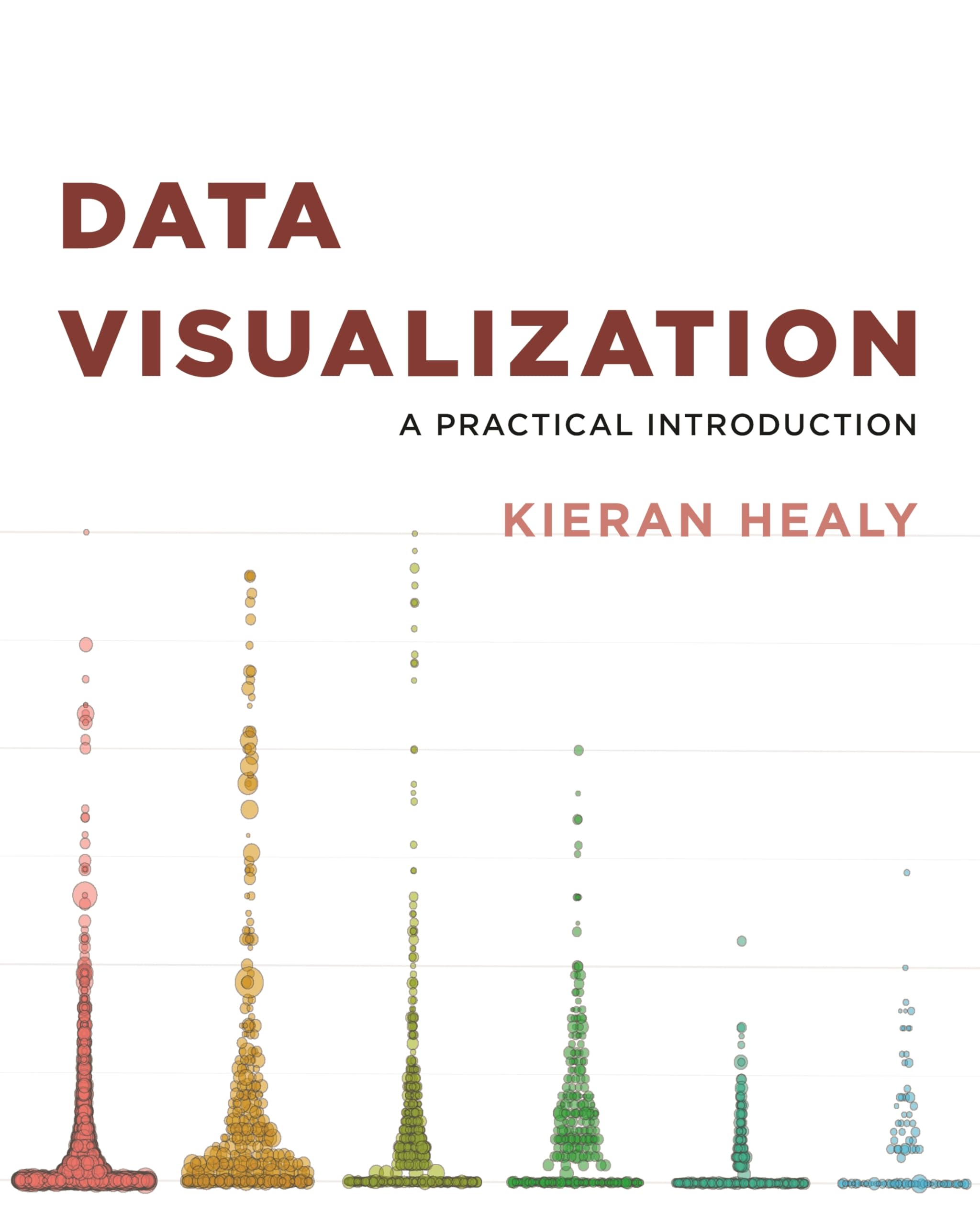Quantitative Research Methods
Syllabus (SOCI 3040 with John McLevey)
This section of SOCI 3440 is an introduction to quantitative research methods, from planning an analysis to sharing the final results. Following the workflow from Rohan Alexander’s (2023) Telling Stories with Data, you will learn how to:
- plan an analysis and sketch your data and endpoint
- simulate some data to “force you into the details”
- acquire, assess, and prepare empirical data for analysis
- explore and analyze data by creating visualizations and fitting models
- share the results of your work with the world!
You will use this workflow in the context of learning foundational quantitative research skills, including conducting exploratory data analyses and fitting, assessing, and interpreting linear and generalized linear models. Reproducibility and research ethics are considered throughout the workflow, and the entire course.
Learning Objectives
By the end of this course, students will be able to:
- Explain key principles, concepts, and methods in quantitative research.
- Formulate quantitative research questions, outline analysis plans, and sketch data analysis endpoints.
- Obtain datasets from common sources (e.g., data repositories, APIs).
- Process, store, and share data.
- Conduct purposeful exploratory data analyses.
- Fit, assess, and interpret linear models, generalized linear models, and multilevel models.
- Use R and Quarto (properly) to make your quantitative research fully reproducible.
- Understand the essential role and implications of ethics in quantitative research.
- 🔥 Tell compelling and credible stories with data.
More specific learning objectives can be found in the lecture and lab materials for each class meeting.
Assigned Readings
This courses uses Rohan Alexander’s (2023) Telling Stories with Data, which is freely available online, in full. The schedule contains links to specific chapter assignments for each class. You can also quickly access specific chapters using the drop down menus in the top navbar on the course website.
Alexander (2023) Telling Stories with Data
“This is not another statistics book. It is much better than that. It is a book about doing quantitative research, about scientific justification, about quality control, about communication and epistemic humility. It’s a valuable supplement to any methods curriculum, and useful for self-learners as well.” – Richard McElreath

“This clean and fun book covers a wide range of topics on statistical communication, programming, and modeling in a way that should be a useful supplement to any statistics course or self-learning program. I absolutely love this book!” – Andrew Gelman
“Every data analyst has to tell stories with data, and yet traditional textbooks focus on statistical methods alone. Telling Stories with Data teaches the entire data science workflow, including data acquisition, communication, and reproducibility. I highly recommend this unique book!” – Kosuke Imai
“Telling (true) Stories with Data requires more than fancy statistical models and big data. With a series of fascinating case studies, Rohan Alexander teaches us how to ask good questions, acquire data, estimate models, and communicate our results. This holistic approach is explained with crisp and engaging prose. The pages are filled with detailed R examples, which emphasize the importance of transparency and reproducibility. I absolutely love this book and recommend it to all my students.” – Vincent Arel-Bundock
“An excellent book. Communication and reproducibility are of increasing concern in statistics, and this book covers these topics and more in a practical, appealing, and truly unique way.” – Daniela Witten
Recommended / Optional
You may also wish to consult Kieran Healy’s (2019) Data Visualization: A Practical Introduction, which is also available for free online, in full.
Healy (2019) Data Visualization
“Finally! A data visualization guide that is simultaneously practical and elegant. … Data Visualization is brimming with insights into how quantitative analysts can use visualization as a tool for understanding and communication. A must-read for anyone who works with data.” – Elizabeth Bruch

“Healy’s fun and readable book is unusual in covering the ‘why do’ as well as the ‘how to’ of data visualization, demonstrating how dataviz is a key step in all stages of social science – from theory construction to measurement to modeling and interpretation of analyses―and giving readers the tools to integrate visualization into their own work.” – Andrew Gelman
“Data Visualization is a brilliant book that not only teaches the reader how to visualize data but also carefully considers why data visualization is essential for good social science. The book is broadly relevant, beautifully rendered, and engagingly written. It is easily accessible for students at any level and will be an incredible teaching resource for courses on research methods, statistics, and data visualization. It is packed full of clear-headed and sage insights.” – Becky Pettit
“Kieran Healy has written a wonderful book that fills an important niche in an increasingly crowded landscape of materials about software in R. Data Visualization is clear, beautifully formatted, and full of careful insights.” – Brandon Stewart
Computing
Detailed information about computing in this course is available here.
You will learn to use R (a free/open source programming language and environment for statistical computing and graphics) and Quarto (a free/open source publishing system for creating dynamic and reproducible manuscripts, reports, websites, and presentations) in this course. Note that I assume no prior experience with R or Quarto. Everything you need to know about both will be introduced in the course. While some prior programming experience is an asset, it is by no means necessary.

Course Schedule
The full course schedule is available here.
Assessment
Detailed information about assessment in this course is available here.
Conventions & Notation
Information about conventions (e.g., callout box styles) and notation (e.g., for writing down our models) used in the course is available here.
Policies
Course, department, faculty, and university policies are available here.